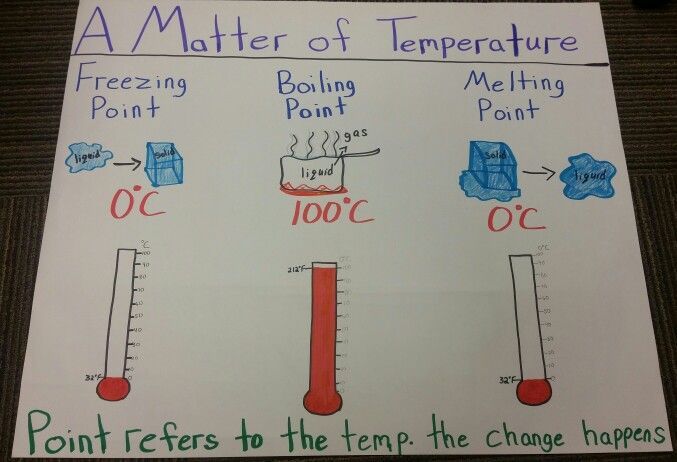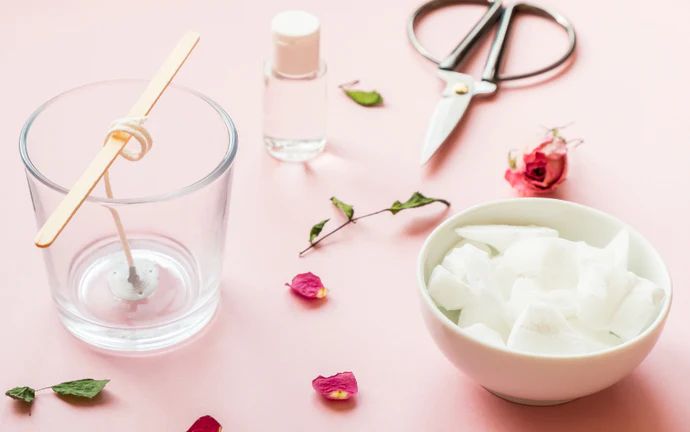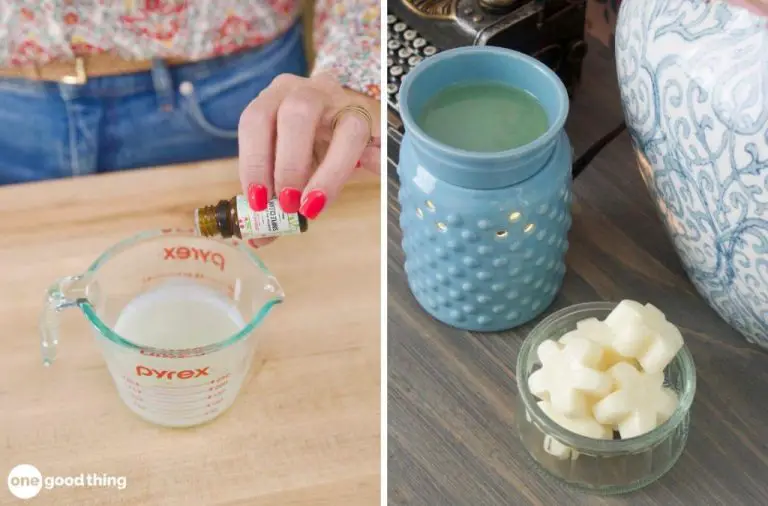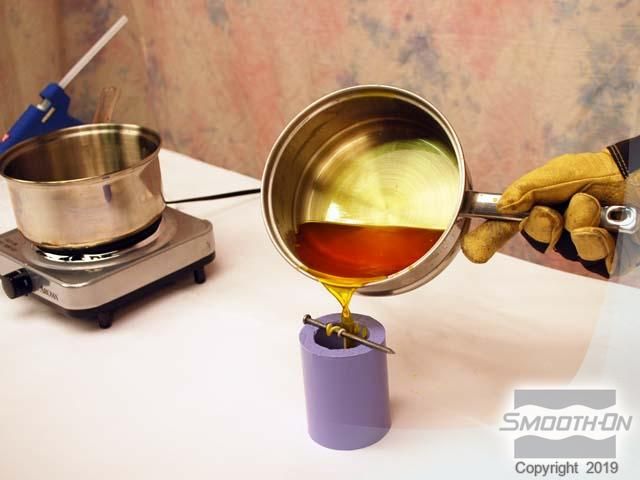What Product Is Made Of Wax?
Wax is an organic substance that is solid at room temperature but melts when heated. It is made up of long-chain hydrocarbons and can be derived from petroleum, animals, or plants (Wikipedia, 2022). Waxes have a wide range of uses and are commonly found in household products like candles, crayons, lip balms, and ski wax. They serve purposes such as allowing surfaces to repel water, providing lubrication, giving structure to complex organisms, and more. Some common types of wax include paraffin, beeswax, and soy wax. In general, anything that is made of wax will melt when heated and becomes solid again upon cooling.
Candles
Candles are one of the oldest uses of wax. Beeswax and tallow (animal fat) candles have been used since ancient times to provide light. Evidence of candle wicks made from plant fibers dates back to around 3000 BC in Egypt and the Middle East. Candles then spread to Ancient Greece and Rome. By the Middle Ages, candlemaking was an established craft in Europe.
Wax candles were the main source of artificial light for centuries until the invention of oil lamps and gas lighting in the 1800s. The growth of paraffin wax in the 1850s allowed the mass production of affordable candles. Unfortunately, the popularity of candle use suffered from the invention of the light bulb in 1879. Although, candles were still used to light the majority of homes in North America up until the 1920s.
Today, candles remain popular for creating ambiance and fragrance. The candle industry has grown substantially in recent decades, with paraffin wax and soy wax being the most common modern candle waxes. Scented candles now come in a huge variety for consumers. While no longer the primary light source, the wax candle continues to hold an enduring appeal.
(Source: https://candlebusinessboss.com/history-of-candles-when-were-candles-first-used/)
Crayons
Crayons have been used by artists for centuries, but the modern wax crayon was developed in the late 1800s. The first wax crayons were developed by Binney & Smith Co. in 1885. They used paraffin wax combined with non-toxic pigments to create safe, vibrant colors for children to draw with. Their product was called Crayola Crayons and they revolutionized art supplies for children.
A major innovation was enclosing sticks of colored paraffin wax in paper wrappers. This made them easy to handle without getting messy. The manufacturing process involved melting paraffin wax and mixing in precise amounts of pigment. The liquid wax was then poured into molds, cooled into sticks and wrapped in paper labels identifying the color. This efficient manufacturing process allowed the company to produce quality crayons on a large scale.
Crayola debuted with 8 different wax crayon colors in 1903. Over the decades they continued expanding their color palette, introducing specialty crayons like metallic, glitter and neon varieties. Today Crayola produces over 120 different crayon colors, cementing crayons as an iconic art medium for children around the world.
Wax Paper
Wax paper is a paper that has been coated with a thin layer of wax. Its purpose is to prevent food from sticking to it and to protect food from moisture, making it useful for wrapping food items like sandwiches and baked goods.
Wax paper was invented in the mid-1800s as a more convenient and food-safe alternative to greased paper. It grew in popularity in the early 1900s when brands like Reynolds started mass producing it. Today, it remains a staple product in kitchens for tasks like lining baking sheets, covering food for storage, and making candy like taffy and caramel.
According to one survey, wax paper is found in 98% of U.S. kitchens and used regularly by 92% of households. Its versatility, non-stick properties, and moisture barrier continue to make it a highly utilized culinary tool.
Sources:
[1] https://edimaniacs.com/wax-paper-vs-parchment-paper-choosing-the-right-cookware/
Surfboard Wax
Surfboard wax is an essential product used in surfing and bodyboarding to provide traction and grip on the board. According to Salty Shreds, surfboard wax is typically composed primarily of paraffin, a byproduct of oil. This gives the wax its sticky, grippy texture (“How to Wax a Surfboard,” Salty Shreds). Surfboard wax is applied in a pattern to the deck of the board before entering the water. The wax adheres to the fibreglass board and creates a tacky surface that the surfer can stand on.
The main purpose of surfboard wax is to provide traction so the surfer’s feet do not slip off the board while riding waves. It creates friction between the surfer’s bare feet and the deck of the board. According to Wikipedia, adding petroleum jelly to the wax formula creates a softer, more malleable product that melts due to body heat (“Surfboard Wax,” Wikipedia). Surfboard wax is reapplied before each surf session because the friction of the water wears it down over time.
There are different types of wax that vary in tackiness, hardness, and base ingredients. The right surf wax is chosen based on water temperature and surf conditions. Harder waxes are used in warm water, while softer waxes grip better in colder temperatures. Wax is typically applied in a bumpy, textured pattern on the board to maximize traction.

Cheese wax coatings
Cheese is often coated in wax for several important reasons. According to Blended Waxes, the main purpose of cheese wax is to protect the cheese as it ages. The wax coating provides a protective barrier that prevents mold growth and helps retain moisture in the cheese.
Cheese wax creates the ideal environment for cheese to age and develop flavor. It allows the cheese to breathe while keeping the interior moist. According to Godminster, cheese wax regulates the moisture levels, preventing the cheese from drying out or becoming too wet. It also seals in aroma and creates an anaerobic environment.
Overall, cheese wax is an essential part of the cheesemaking process. It helps extend the shelf life of cheeses while allowing them to mature and ripen properly. The wax coating gives cheese its characteristic appearance while protecting the interior as flavor develops.
Wax Sculptures
Wax sculptures are a unique art form that involves shaping wax into intricate figures and designs. The practice dates back thousands of years, with some of the earliest known wax sculptures created in ancient Egypt. Wax is an ideal medium for sculpting because it can be easily molded when warmed, retaining fine details, and then becomes fixed in shape as it cools.
Creating wax sculptures takes great skill and precision. The artist starts with blocks or sheets of wax, which they carve and model into the desired form. Wax is very responsive to touch, allowing artists to sculpt extremely delicate features. The wax is warmed frequently with a heat lamp or other device so it remains malleable as the artist works. Modeling tools, specializedLooptools, and brushes can also be used to refine the sculpture.
Wax lends itself well to achieving lifelike qualities in sculpture. Artists can create remarkably realistic representations of human figures, animals, plants, and other subjects. The translucency of wax even allows for subtle suggestions of skin and the passage of light seen in nature. Wax finishes can also be modified from high gloss to matte surfaces depending on the intended effect.
While fragile, wax sculptures can be preserved by making molds and casts. This allows the original work to be reproduced and protected from damage. Wax remains a popular choice for sculpture, especially for preparatory models later cast in metal or used to create larger works. The responsive nature of wax allows artists great freedom in their creative expression.
Wax seals
The purpose of wax seals is to authenticate documents or letters. Wax seals have a long history dating back thousands of years. The ancient Mesopotamians used engraved stone cylinders to roll impressions into clay tablets as early as 3500 BCE (The History of Wax Seals: A Journey Through Time). Wax seals were also used in ancient Egypt and ancient Greece to secure and authenticate documents.
The use of wax seals became popular in medieval Europe to confirm the authenticity of documents. Kings, nobles, and clergy used engraved signet rings to imprint their coat of arms or symbol into wax applied to a document. This verified that the document came from that person and had not been tampered with (The Rediscovered Art of Wax Seals). Wax seals remained common for securing personal letters into the 19th century.
Today, while less common, wax seals are still used for formal invitations like weddings. Wax seals add a decorative, ornate touch and signify the importance of the document or letter. The purpose remains authenticating and securing correspondence.
Ski and snowboard wax
Ski and snowboard wax serves an important purpose – it reduces friction between the base of the ski or snowboard and the snow surface for faster gliding. The right wax can make a dramatic difference in speed and performance.
There are several types of ski and snowboard wax:
- Hydrocarbon wax – Made from paraffin wax and microcrystalline wax, provides basic glide for recreational use
- Fluorocarbon wax – Contains fluorocarbons that repel water and dirt, provides excellent glide and durability for racing and competitive use
- Graphite wax – Contains graphite powder to increase lubricity, good for very cold and very abrasive snow
- Rub-on wax – Pre-applied wax that can be rubbed onto the base, convenient alternative to hot waxing
The type of wax used depends on snow conditions – temperature, moisture level, snow crystal type. The right wax will form a thin water layer between the base and snow for minimal surface contact and friction. Racers may use 10 or more special waxes over a season tailored for specific snow types.
Applying the proper wax takes experimentation and experience to maximize glide and control. Most wax contains a mix of ingredients to optimize performance across varying conditions.
Source: https://www.racewax.com/choosing-wax/
Conclusion
Wax is an incredibly versatile material that is used in the production of many common items we use every day. As we learned, some of the most popular wax products include candles, crayons, wax paper, surfboard wax, cheese coatings, wax sculptures, seals, and ski/snowboard wax. While the specific waxes used in each product differ somewhat in their properties and production, they all leverage the ability of wax to be molded or shaped when warm, and harden into a solid form when cool. This allows wax to be an ideal material for creating objects that need to hold their shape like candles and crayons, provide protection or lubrication like surfboard and ski wax, or enable the creation of detailed sculptures and seals. Through the clever use of this unique material, wax has become an essential component for various creative, practical and artistic endeavors.




